If you want to quickly launch a business without getting stuck in over-planning, “Million Dollar Weekend” by Noah Kagan is a must-read. This book provides a straightforward approach to starting a business in just 48 hours by focusing on taking action, solving real problems, and validating your ideas with paying customers before you spend any money.
Whether you’re aiming to monetize a hobby, grow a side hustle, or build a full-scale business, this book offers practical steps and insights to help you get started. In this summary, we’ll break down the key takeaways from each chapter, so you can immediately apply these strategies to your own entrepreneurial journey.
🚀 1. Just Start and Experiment: Success in business comes from taking action, not overthinking. Try a lot of small experiments. Expect most ideas to fail until you find what works.

Chapter 1 Summary
- Small experiments are the key to business: Most people never start their business because they spend too much time overthinking, planning, and studying. In business, the way to succeed is to just get started and try lots of small experiments. Most of them will fail, but some will succeed. It’s smarter to take action now and begin receiving real-world feedback on your business ideas. Example: Mark Zuckerberg began Facebook as a simple fun project that let Harvard students anonymously rate each other’s attractiveness.
- Noah Kagan’s history of failures: Noah missed several opportunities early in his career, failing interviews at Microsoft and Google. He was later fired from Facebook, where his 0.1% stake would have been worth nearly $1 billion today. Despite these setbacks, he embraced failure and learned from each experience, moving on to successful ventures like Mint, Kickflip, and Gambit. (More on these later.)
- Challenges: To practice this mindset, the chapter suggests asking a friend to invest $1 in your business idea, emailing close friends to ask what business you’d be good at, and setting a “Freedom Number” income goal (e.g., $3,000) that is both meaningful and attainable.
Another great business teacher is Alex Hormozi, who made millions with a gym marketing company and then expanded into e-commerce, software, supplements, and more—generating over $100 million in revenue.
In his book $100M Offers, Hormozi says, “If you try one hundred offers, I promise you will succeed. Most people never try anything. Others fail once, then give up. It takes resilience. It’s not about you! If your offer doesn’t work, it just means the offer sucks—not you. You only fail if you stop trying. So, try again.”
Chapter 2 Summary
- You Have to Ask to Get What You Want: Many people fail in business because they’re afraid of rejection. In any business, you need to keep asking—whether it’s convincing customers to buy, suppliers to sell, or partners to collaborate. Noah Kagan sees rejection as a necessary step, and once you view it as a positive, it becomes a powerful tool. He secured his dream internship at Microsoft after his 12th email to the recruiter, and 50% of AppSumo’s sales come from follow-up emails to visitors who didn’t buy on their first visit.
- Set Rejection Goals: Overcoming the fear of rejection involves setting goals for how many times you want to be rejected. This turns rejection into a learning experience, much like reps in the gym. Kagan learned this mindset from his father, an Israeli immigrant with a thick accent who sold copiers to small businesses, facing countless daily rejections without getting discouraged.
- Challenge: Try asking for a 10% discount on your next coffee. The worst that can happen is some temporary social discomfort, but it will strengthen your ability to ask for what you want.
What is the best way to find what works in business?
Make a detailed plan
Try many small experiments
Study competitors
Wait for the perfect idea
🔍 2. Look for Problems, Not Products: The best business ideas start by identifying real problems people face. Don’t begin with a product; listen to peoples’ pain points and frustrations.
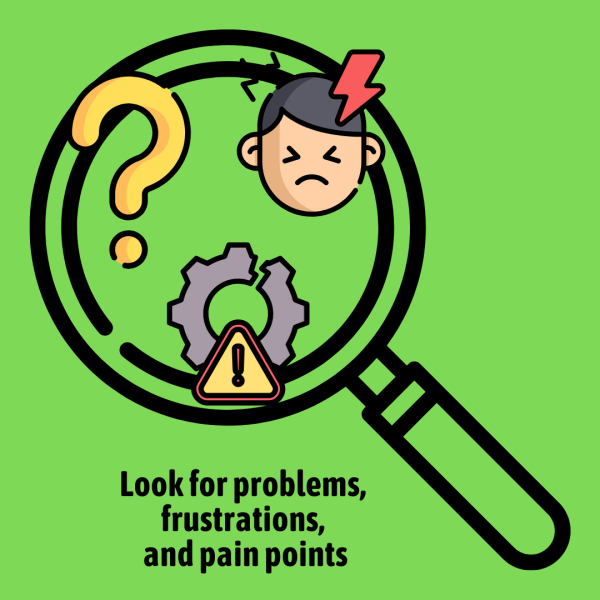
Chapter 3 Summary
- Start with Problems, Not Products: Many entrepreneurs are told to create a Minimum Viable Product (MVP), but that approach focuses too much on what we want to sell instead of what the customer needs. A better approach is to identify problems and talk to potential customers right away for feedback to come up with your business idea.
Most people start a business by coming up with an idea, building a website, and researching, but they often give up. A smarter way is to reach out to people, get their input, and try selling a simple version immediately, even before the product is created. - Noah’s Successes Came From Spotting Problems: Noah Kagan learned this the hard way. After some success building a Facebook games/apps company called Kickflip, he spent $100,000 and months building a sports betting app that no one wanted called BetArcade. In a panic, he asked, “What’s my biggest problem?” He realizing it was high 50% payment processor fees. He validated the idea by calling some friends who also owned Facebook Games. Then his team built an alternative payment system in two weeks named Gambit, which was soon processing $15 million in revenue.
Later, he started AppSumo after seeing a website called MacHeist, which offered discounts on Mac apps. He believed there was a need for a deals for business software. With just a few emails, a simple web page, and a PayPal button, he promoted a deal to Reddit users on an image hosting app called Imgur. The experiment was a huge success, eventually growing into a $65+ million annual business. - How to Find Ideas: Think about problems you’ve faced recently. Start with groups you’re part of, like golfing or bird-watching, and ask for feedback. Look at popular products on eBay, Etsy, or Amazon and consider creating something complementary. Check Google autocomplete searches and relevant subreddits to see what people are searching for and asking about.
Another popular book for starting a business is The Millionaire Fastlane by MJ DeMarco. Before he made millions, DeMarco was living with his mom and working various jobs like delivering pizzas and driving limousines. One day, a customer asked him if he knew any limo companies in another city, revealing a market need. DeMarco then created a website for booking limousines online, which he eventually sold for millions.
His top advice for aspiring entrepreneurs is: “Stop thinking about business in terms of your selfish desires, whether it’s money, dreams, or ‘doing what you love.’ Instead, focus on needs, problems, pain points, service gaps, and emotions.” In short, people don’t care about what you’re passionate about—they want to know how you can make their lives better and easier.
When starting a business, what should you focus on first?
Creating a product
Designing a logo
Identifying real problems people face
Choosing a brand name
💰 3. Get Real Validation: Only count sales as validation, not just interest. Ask customers to pay, even for a simple version of your product.

Chapter 4 Summary
- Check That Demand Exists: Before starting a business, make sure there’s already demand for your idea. You’re not creating demand; you’re finding a “starving crowd,” as the influential copywriter Gary Halbert said. Use free tools like Google Trends to see if interest in your market is growing, and Facebook Ads to measure the size of the audience interested in your product.
- Estimate Profitability: Next, figure out if your idea can be profitable. Estimate the selling price, subtract the costs, and calculate your profit per unit. Then, determine how many units you need to sell to reach your income goal. If it seems unachievable, adjust your approach or move on to a different business idea.
- SumoJerky Example: Noah Kagan once took on a challenge to make $1,000 in 24 hours by selling jerky. He initially planned to sell each bag for $20 with a $5 profit, meaning he would need to sell 200 bags to reach $1,000. Realizing this was too much, he pivoted to selling 6-month subscriptions directly to businesses, increasing his profit to $30 per sale. This allowed him to meet his goal with just 33 sales, making it far more feasible. By emailing tons of startup to see who was interested in buying supply of jerky for their offices. He reached his target in a single day and eventually sold the business for $120,000 two years later.
Chapter 5 Summary
- Get 3 Paying Customers in 48 Hours: The best way to validate your business idea is to get people to actually pay for it. Interest or compliments aren’t enough; real validation comes when someone hands over money. For example, Noah Kagan got sales for his jerky service, then searched for a supplier.
- How to get initial sales?
- 1. Direct Selling: Reach out to people within your network, like friends, family, or groups you’re part of. Make a list of 10 people who might be interested and pitch your idea. If they say no, use it as a learning opportunity by asking why not, what would make it a must-buy, or if they know someone who might be interested. Use their feedback to improve your offer for the next person.
- 2. Marketplaces: Use online marketplaces like Facebook Marketplace or Craigslist, where people are already looking to buy. List your product or service there to see if anyone is interested. It’s an easy way to test demand.
- 3. Landing Pages: Set up a simple one-page website with a buy button to explain what you’re offering. Use tools like Clickfunnels or Instapage to make this quick and easy. For example, Justin Mares created a landing page for bone broth, charging $30 per order, and quickly made $500 in sales. This eventually turned it into a $100 million company called Kettle & Fire.
The original book for learning about passive income and online business is The 4-Hour Workweek by Tim Ferriss. When choosing a business idea, he also suggests validating it before investing too much time or money. He wrote, “To get an accurate indicator of commercial viability, don’t ask people if they would buy—ask them to buy. The response to the second is the only one that matters.” Ferriss believes that no one can accurately predict if a business idea will succeed, and people often praise ideas just to be polite. The real test is getting them to actually pay for it.
How do you know if your business idea is truly validated?
People show interest
You get followers on social media
Customers pay for it
Friends say they like the idea
📈 4. Find Your Best Marketing Channel: Experiment with various channels—including social media, paid advertising, and B2B—then double down on what works best for your business.
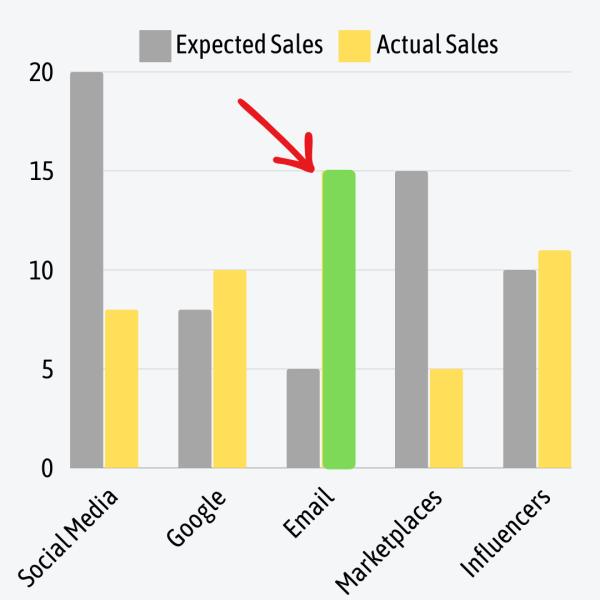
Chapter 6 Summary
- To grow on social media, find your uniqueness: Why should people listen to you on this topic? What value will you provide them with? What do most people get wrong about this topic? Don’t think you need to be the world’s expert on the topic, just take people along with you on your journey, share what you’re trying or what’s working for you (This is similar to Gary Vee’s advice not to “create content,” but simply document your journey—an approach which takes less effort and is more engaging because it’s authentic.)
- Choose the Right Platform: To build an engaged audience, pick a social media platform where your target customers spend time. Noah Kagan suggests trying out a few of the more popular platforms for 30 days, then doubling down on what works for you. For his personal brand, Noah found YouTube was the best channel by far. Short-form platforms like TikTok and Twitter make it harder to build deeper connections, and podcasts or blogs are more challenging to grow nowadays.
- Start Narrow, Then Expand: Begin with a hyper-targeted niche audience and gradually broaden your focus. For example, Ali Abdaal started by making videos for British medical students, then expanded to general study tips, and eventually to broader topics like investing and productivity. Today his YouTube channel has almost 6M subscribers and makes millions of dollars per year.
- The Law of 100: Keep going until you’ve tried 100 times. Like practicing a skill, you get better with repetition. The author regrets quitting his podcast too early after 50 episodes when it was getting “only” 30,000 downloads per episode. He recently decided to relaunch his podcast, but only receives 7,000 downloads per episode. The lesson: don’t give up too soon.
What should you do after testing multiple marketing channels?
Focus on the one that works best
Use all channels equally
Switch to a new channel every month
Choose the cheapest option
📧 5. Use Email for Profit: Build an email list—it’s more reliable and profitable than social media. The key is to offer people a valuable resource like a free guide in exchange for their email.
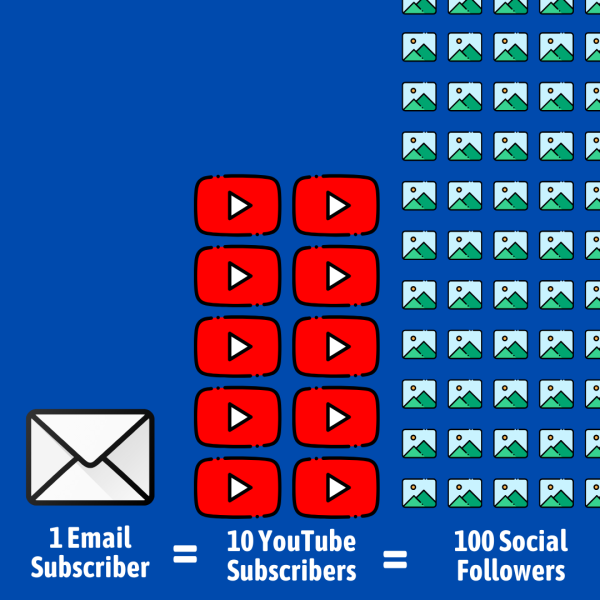
Chapter 7 Summary
- Email Marketing Isn’t Dead: Most people check their email multiple times per day, making it of the most powerful and profitable marketing channels. Noah says one of his email subscribers is worth more than ten YouTube subscribers or 100 Instagram followers. Unlike social media, where algorithms control who sees your content, email gives you direct access to your audience. 50% of AppSumo’s $65 million in yearly sales comes from email, even more than their huge social media following.
- Create a Real Connection: It’s not just about having a big email list; you need to connect with your subscribers. You can do that by adding personality and authenticity to your emails. Early on, AppSumo’s emails were basic, just sharing deals, and they made an average of $100 per email. But one day a copywriter named Neville Medhora started adding humor and stories, and their sales skyrocketed to $10,000 from a single email. A good open rate to aim for is 20%.
- How to Get Your First 100+ Subscribers: Set up a simple landing page using tools like Mailchimp or ConvertKit. To get your first 10 subscribers, start by emailing friends and family. For the next 50, add your link to your email signature and social profiles. Promote your newsletter on social media to reach 100.
After that, create a “lead magnet” like a checklist, template, or guide to attract even more sign-ups. Use content marketing, like writing helpful guides or answering questions through video, to drive traffic to a landing page where people can enter their email to download your lead magnet. For example, a YouTube channel about London travel gained 45,000 email subscribers by offering a free London Travel Guide at the end of each video. Then, set up an automatic email sequence to introduce new subscribers to your best content, which will help you make sales automatically.
Russell Brunson, co-founder of Clickfunnels, a software company with over 100,000 paying customers, emphasizes the importance of targeting the right audience. In his book Dotcom Secrets, he advises offering a lead magnet that specifically attracts your ideal customer, not just anyone with a vague interest in your topic.
Earlier in his career, Brunson found himself unhappy because his business was attracting absolute beginners who needed lots of help with the basics, like setting up a website. Until one day a friend changed his life by saying, “If you change your bait, then you’ll change your customer.” By clearly defining his dream customer, he was able to offer content that attracted the clients he actually wanted to work with.
Chapter 8 Summary
- Choose One Very Specific Business Target: Write down a clear goal with a deadline. This could be a certain number of users, subscribers, or sales. This was a major lesson the author learned directly from Mark Zuckerberg, who said no to Noah’s idea of selling tickets through Facebook Events, because he wanted Facebook to focus only on reaching 1 billion users. Later, AppSumo set a goal of 100,000 email subscribers, knowing that number would drive everything else, including sales.
- Find Your Most Profitable Marketing Channel: First, identify your target customer and where you can reach them. If possible, ask your current customers where they would expect to see your product. Second, create a spreadsheet of potential marketing channels, including how many sales you expect from each. Third, test each one for 30 days, track your results, then add actual sales to the spreadsheet. Finally, double down on what works.
Each business is a little different in which channel works best—Mint used blogging, AppSumo relied on paid ads, and the author found YouTube to be the best platform for his personal brand. One of Noah’s students was selling rock climbing glasses, and the best channel turned out to be wholesale buyers bringing in a whopping 200+ sales, while other channels like eBay and Facebook Ads brought 0 sales. - Satisfied Customers Are Your Strongest Growth Lever: Happy customers are your best source of referrals. To make them more likely to recommend your product, focus on improving their experience. For Noah, this often includes personal contact—emailing each customer, responding to comments and reviews, and asking how to make the product better. For AppSumo, the team asks customers what products they would like to see deals for on the website.
What is a key strategy for building an email list?
Post daily on social media
Offer a free resource in exchange for emails
Send emails without permission
Buy an email list
🗓️ 6. Design the Life You Want: Set dream goals and consistently network to create a business that aligns with your ideal life.
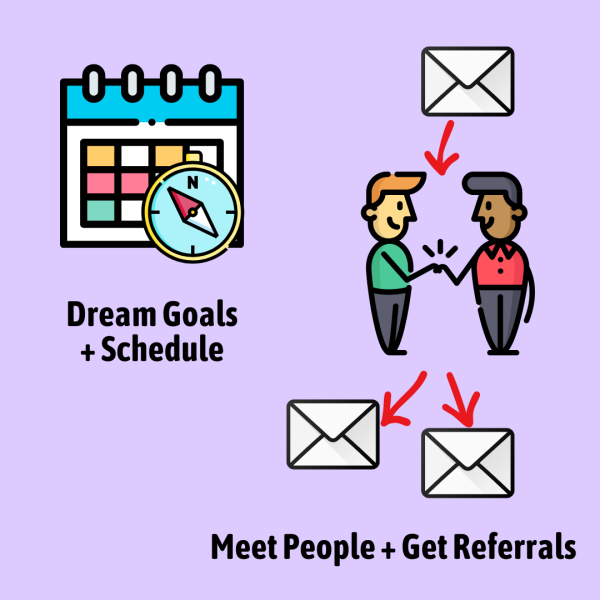
Chapter 9 Summary
- Set Your Dream Goals: Identify goals that excite you in work, personal life, health, and travel, then organize them using time blocks on a color-coded calendar. Review your progress every week with an accountability partner. Noah Kagan built AppSumo to $4 million in revenue and took home $150,000 in income, but he still felt miserable. During a trip to India, he realized he was doing what he “should” do instead of what he truly wanted—the whole reason he became an entrepreneur. When he returned, he set clear goals and made changes, like only promoting products he believed in and avoiding meetings before noon.
- Network with New People: Building connections is crucial—90% of the author’s net worth came from people he knew. Start by reaching out to others without asking for anything; simply show appreciation for their work to start a conversation and build a relationship. Focus on “pre-fluencers”—those who aren’t famous yet. This strategy helped the author connect with people like Tim Ferriss.
Andrew Chen moved to Silicon Valley knowing almost no one and is now a general partner at Andreessen Horowitz, a major venture capital firm. He set a goal of meeting five new people a day. After each meeting, he would email three key ideas he learned from their conversation and ask if they could introduce him to a couple more people. When contacting new connections, he used the previous person’s name, gave a sincere compliment, and offered value, like marketing advice or a featuring them in a blog article.
What is an essential step in designing the life you want?
Do what experts tell you
Follow trends
Network and set dream goals
Work non-stop
- List Problems: Spend 30 minutes listing frustrations you or others face. Check that people are searching for the topic in Google Trends and find the market size in Facebook Ads. Find a market that has million-dollar potential.
- Pick One Idea: This weekend, launch a basic version of your product in 48 hours—don’t overthink it. You must fail to succeed. Start by pitching it to friends and family who might have the problem, adjust based on their feedback, and ask for referrals.
- Offer to Sell: Reach out to 10 potential customers and ask them to pay for your product upfront. Use direct messaging, marketplaces, or a simple landing page. If you don’t get 3 sales in 48 hours, move on to a new idea.
- Test Channels: Choose 5 marketing channels (social media, ads, email). Test each one for 30 days. Ask current customers where they first heard about you to help prioritize channels.
- Create a Landing Page: Use Mailchimp or ConvertKit to make a page offering a free resource for email sign-ups. Email friends and family today, inviting them to join for the free guide.
- Set Top Goals: Write down your dream goals, then circle the top 3. Block out time this week on your calendar to work on each one.

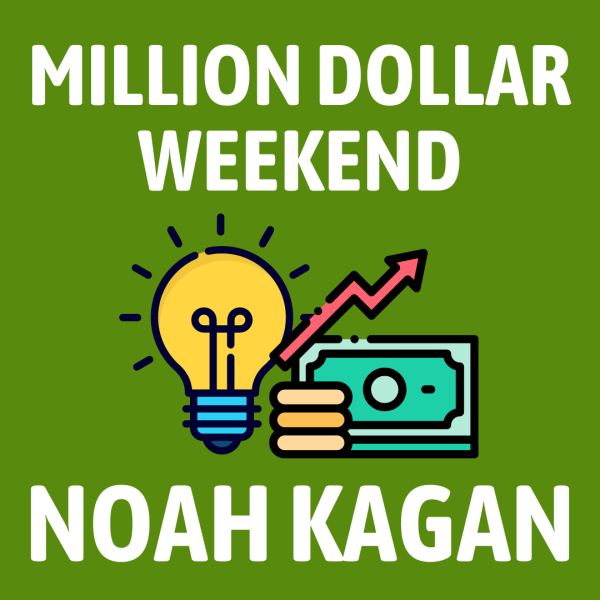
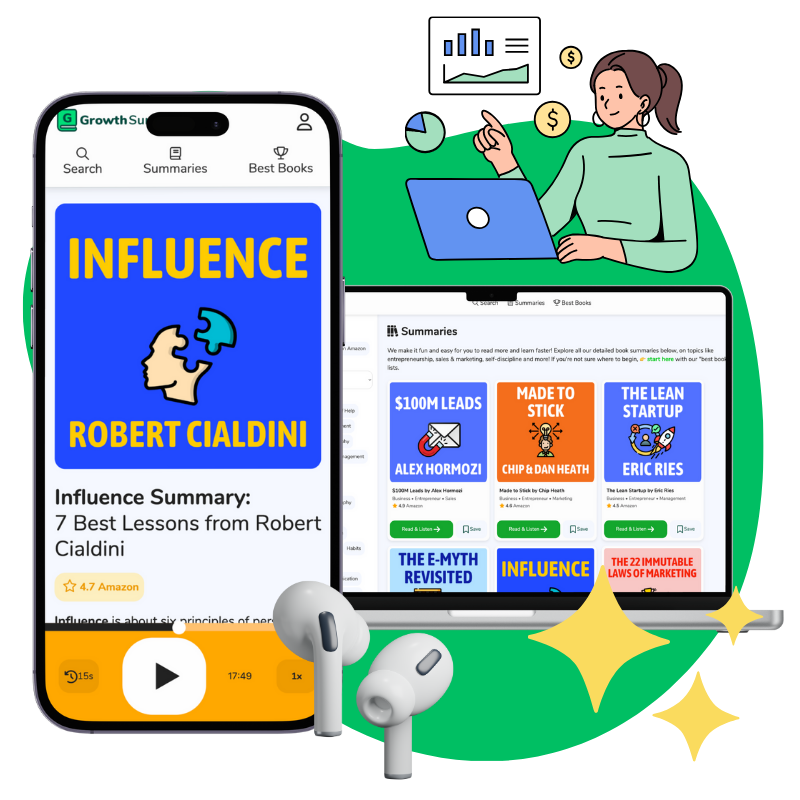
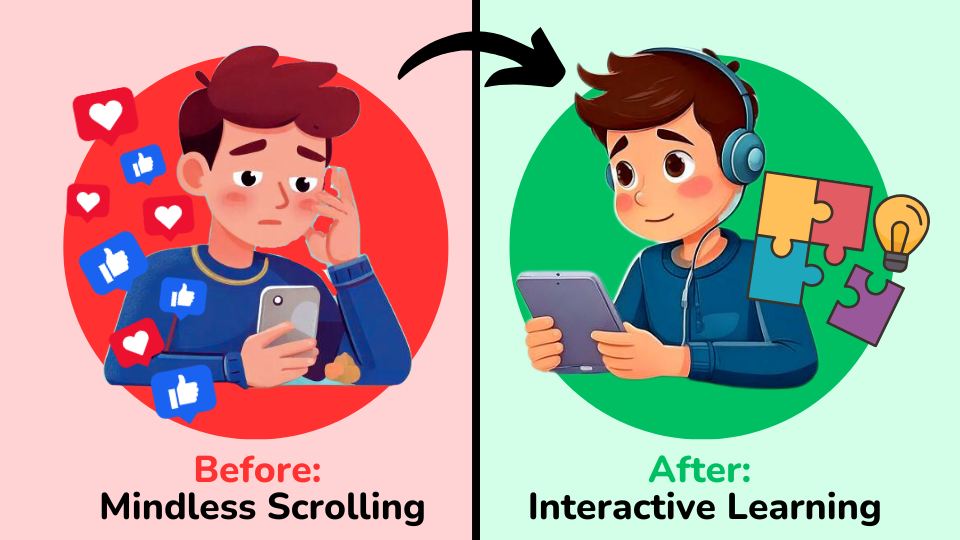









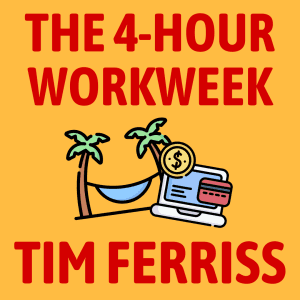
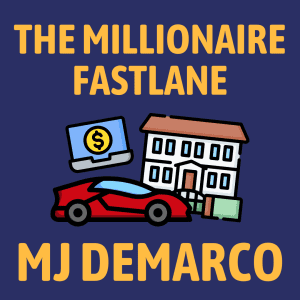















Community Notes